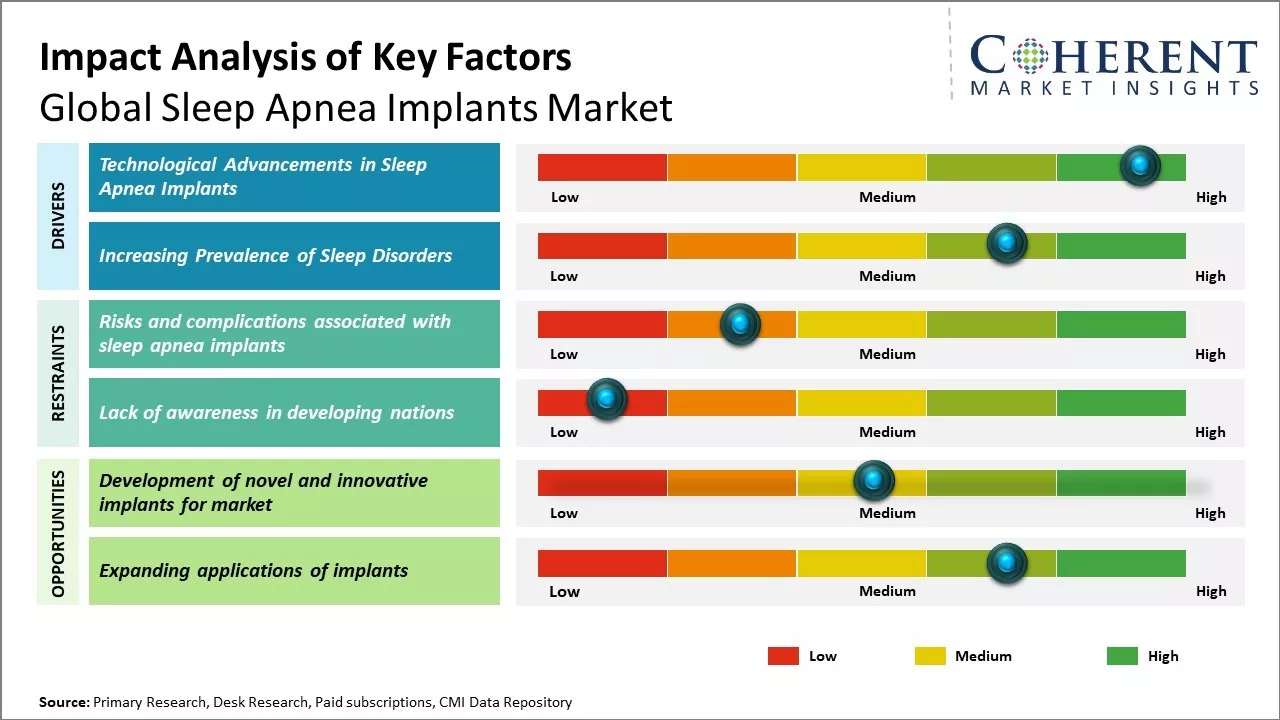The Global Sleep Apnea Implants Market is estimated to be valued at USD 411.6 Mn in 2025 and is expected to reach USD 1,049.8 Mn by 2032, exhibiting a compound annual growth rate (CAGR) of 14.3% from 2025 to 2032.

To learn more about this report, Request sample copy
The sleep apnea implants market is expected to grow at a steady pace during the forecast period. This can be attributed to the rising prevalence of sleep apnea worldwide coupled with growing awareness about the available treatment options. According to recent studies, sleep apnea affects over 936 million people globally. With growing health concerns and better diagnostics, a greater number of patients are opting for surgical treatments using implants. Moreover, development of innovative implant technologies with minimum invasiveness is further supporting the market growth. However, availability of alternative oral appliances and issues associated with the surgery may hinder the market expansion to some extent during the forecast years.
Technological Advancements in Sleep Apnea Implants
Over the past few decades, notable innovations have been brought about in sleep apnea implants that have helped address some of the limitations associated with traditional Continuous Positive Airway Pressure (CPAP) therapy. Significant advancements in areas like biomaterial engineering, miniaturization of implantable components, smart sensor technology, and refined surgical techniques have enhanced the safety, efficacy, and patient comfort with these implant devices. For instance, novel polymers that are biocompatible, durable, and replicate natural tissues have facilitated the development of flexible implant platforms that cause minimal discomfort or damage to delicate airways. Advances in 3D printing and nanotechnology enabled the manufacture of ultra-thin, customized implants tailored to an individual's unique anatomy. Implants are now smaller in size and less invasive to place due to advancements in micro-level machining and assembly techniques. The integration of smart sensors and networked connectivity further fueled new opportunities. These allow real-time monitoring of breathing patterns and apnea incidents from implants. The recorded data can be communicated to doctors wirelessly to aid remote follow ups and personalized therapy adjustments for optimal outcomes. These emerging technologies have made sleep apnea surgery less intimidating, shifted patient preferences towards implants, and boosted industry sales. Moving forward, ongoing R&D in new biomaterials, miniaturization trends, and intelligence augmentation is expected to further enhance implant-based sleep apnea management standards.
Joining thousands of companies around the world committed to making the Excellent Business Solutions.
View All Our Clients